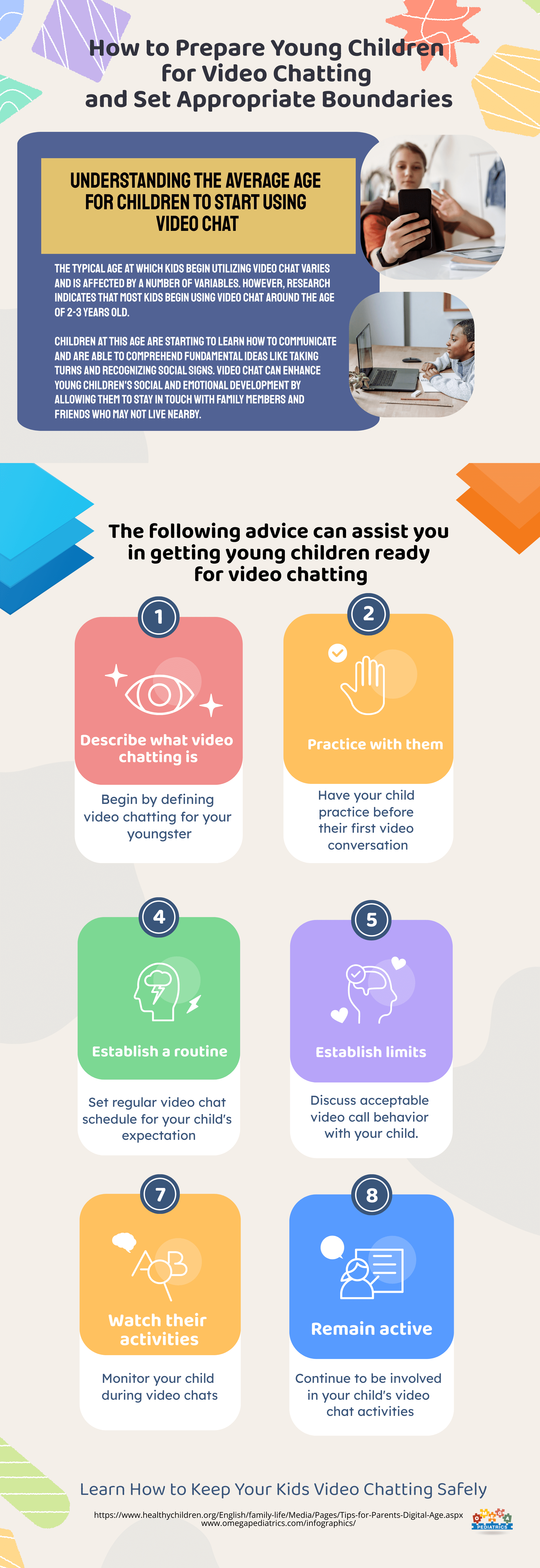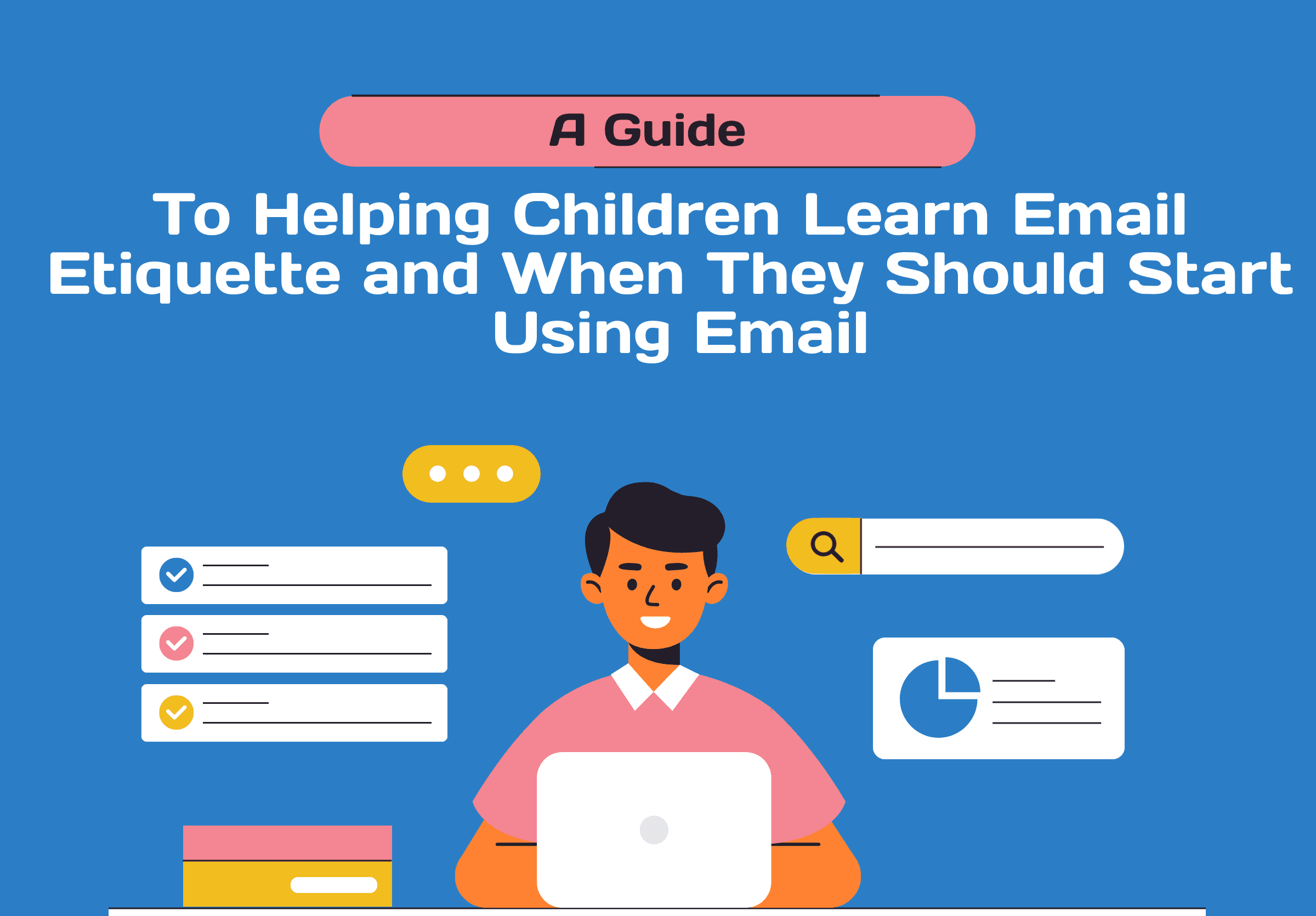Understanding the Average Age for Children to Start Using Video Chat
The typical age at which kids begin utilizing video chatting varies and is affected by a number of variables. However, research indicates that most kids begin using video chat around the age of 2-3 years old.
Children at this age are starting to learn how to communicate and are able to comprehend fundamental ideas like taking turns and recognizing social signs. Video chat can enhance young children’s social and emotional development by allowing them to stay in touch with family members and friends who may not live nearby.
It’s crucial to remember that children’s access to technology, exposure to technology, and experience with video chat can all differ based on their cultural background, socioeconomic class, and level of technology use. Despite the fact that video chat can have a lot of advantages, it should be used sparingly and under adult supervision to protect children’s safety and welfare.
The typical age at which children begin using video chat is between 2 and 3 years old, but it’s crucial to take into account individual variances and make sure that kids’ technology use is suitable for their stage of development.
Young children can stay in touch with family members and friends who may not live nearby by using video chat. To ensure that they have a happy and secure experience, it is crucial to prepare kids for video conferencing and set appropriate boundaries. The following advice can assist you in getting young children ready for video chatting:
- Describe what video chatting is: Begin by defining video chatting for your youngster and describing how it operates. Show them how to use the video chat platform you will be utilizing, and speak to them in plain English that they can comprehend.
- Practice with them: Have your child practice before their first video conversation. To help them get used to the situation, have them talk to you while seated in front of the camera.
- Establish a routine: Schedule video chats for a regular time so your youngster will know what to expect. They will be able to establish a routine and grow accustomed to the procedure thanks to this.
- Establish limits: Explain to your youngster what is and isn’t acceptable behavior during a video call. Let them know that they should not share personal information or talk to strangers online. You can also specify limitations on the number of callers and the duration of the conversation.
- Watch their activities: Keep a watch on your child’s activity when they are video chatting. Verify that they are speaking to someone you know and trust and are not disclosing any private information.
- Remain active: Last but not least, continue to be involved in your child’s video chat activities. Inquire about their calls, including who they spoke with and how they felt at the time. By doing this, you can make sure they are having a good time and being secure online.
You may assist your young children get ready for video chatting by using these suggestions, and you can also set the right limits to guarantee a happy and secure experience for them.
The Developing Mind: How Video Chat Affects Cognitive Growth
Imagine your child’s brain as a garden, each experience a seed waiting to be planted. Video chatting, like a unique and colorful flower, has the potential to bloom into a beautiful aspect of their cognitive landscape. However, just as not all flowers are beneficial, not all screen time is created equal.
As parents, we’re the gardeners of this cognitive garden. How much sunlight (screen time) is too much? Are we cultivating a vibrant and diverse ecosystem? These are questions we need to ponder. Picture each video call as a drop of water – essential, but too much can flood the garden, hindering healthy growth.
Gradual Exposure: Easing Children into the World of Virtual Conversations
Now, let’s talk strategy. Introducing your child to video chatting is like teaching them to ride a bike. You wouldn’t throw them on a two-wheeler without training wheels, would you? Similarly, start small. Begin with short, supervised video calls, gradually extending the duration as your child becomes more comfortable.
Think of it as a digital dance. Start with a slow waltz before attempting the tango. Consider age-appropriate apps and platforms as the dance floor – places where your child can twirl and whirl under your watchful eye.
Crafting Conversations: Adapting Communication for Different Age Groups
Communication is the heartbeat of any relationship, and this holds true for the virtual world as well. Just as you adjust your language when talking to a toddler versus a teenager, tailor your virtual conversations to suit your child’s age.
For the little ones, it’s like telling a captivating bedtime story – keep it simple, engaging, and filled with warmth. As they grow, let the conversation evolve into a dialogue, much like a well-choreographed duet.
As your child’s communication skills blossom, they’ll navigate the digital dance floor with confidence.
Empowering Digital Citizens: Nurturing Healthy Video Chat Habits in Young Children
As we reach the shore of our discussion on video chatting and healthy boundaries, remember, parents are the captains of this digital ship. We’ve explored the gardens of cognitive growth, danced through the steps of gradual exposure, and fine-tuned our communication symphony.
In this era of constant connectivity, our children’s digital experiences are shaping their world. It’s not about completely avoiding the storm but learning to navigate it skillfully. So, here’s my open-ended question to you: How will you, as the captain, chart the course for your child’s digital journey?



